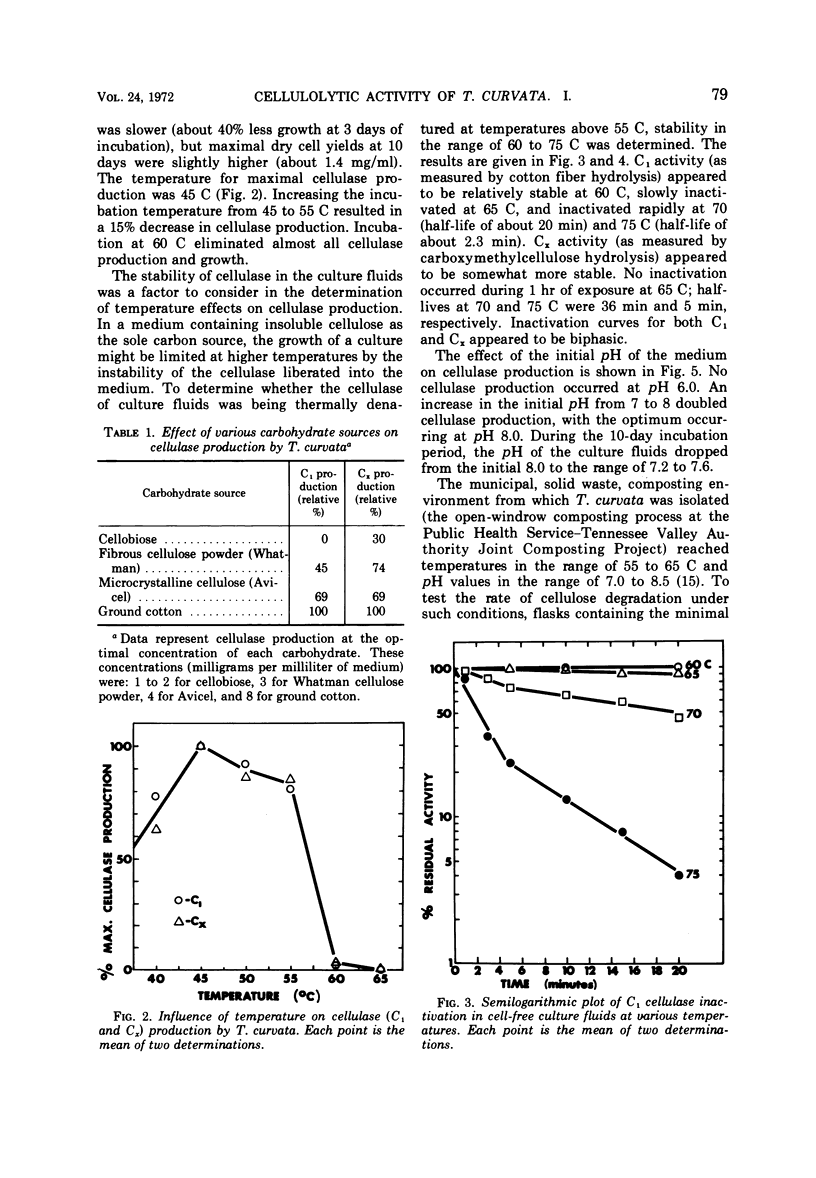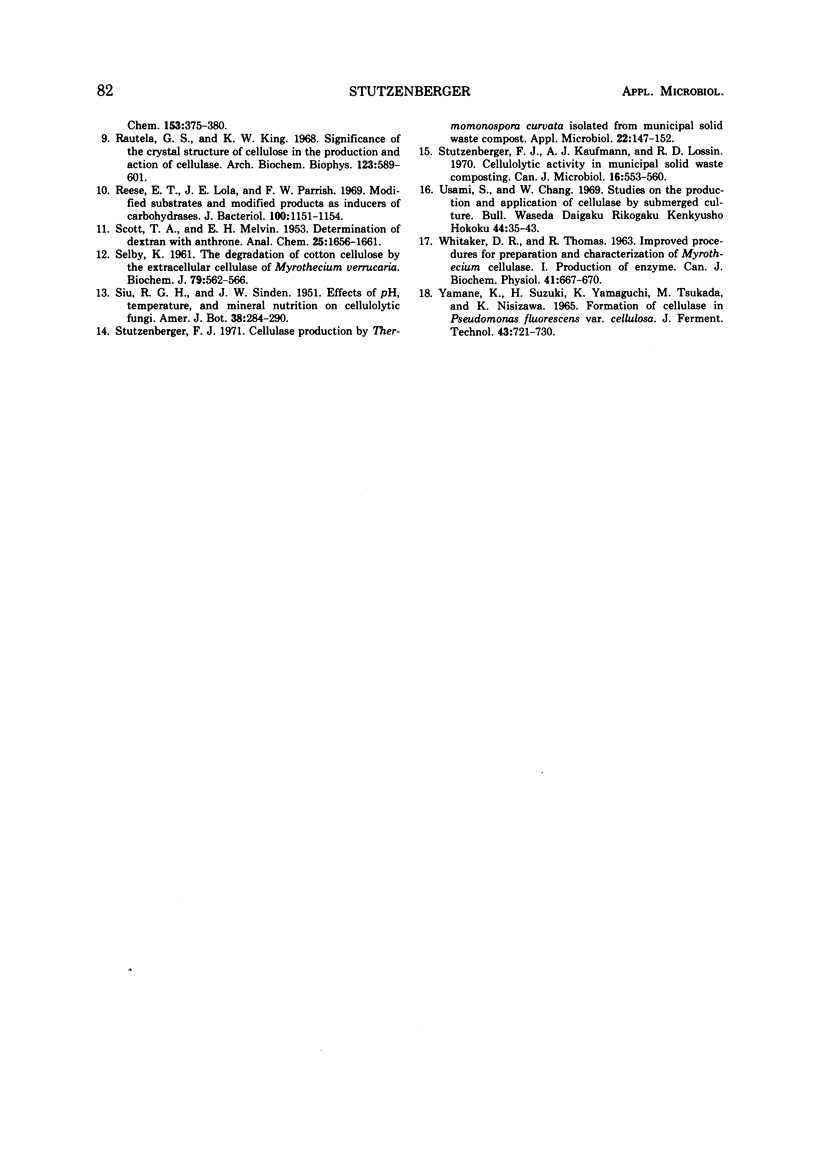Abstract
The use of a minimal medium for cellulase (C1 and Cx) production by Thermomonospora curvata increased extracellular C1 activity (measured by rate of cotton fiber hydrolysis) 11-fold compared with the previously used yeast extract medium. Ground cotton fibers supported the highest cellulase production when compared to other soluble and insoluble carbohydrate sources. Maximal cellulase production occurred at 45 C, slightly less at 55 C, and was insignificant at 65 C (the highest temperature at which cellulase activity appeared stable). At a temperature of 55 C, an optimal pH of 8.0, and a cotton fiber concentration of 8 mg/ml, shake cultures of T. curvata degraded about 75% of the cellulose during the 10-day period.
Full text
PDF





Selected References
These references are in PubMed. This may not be the complete list of references from this article.
- LOWRY O. H., ROSEBROUGH N. J., FARR A. L., RANDALL R. J. Protein measurement with the Folin phenol reagent. J Biol Chem. 1951 Nov;193(1):265–275. [PubMed] [Google Scholar]
- MANDELS M., REESE E. T. Induction of cellulase in Trichoderma viride as influenced by carbon sources and metals. J Bacteriol. 1957 Feb;73(2):269–278. doi: 10.1128/jb.73.2.269-278.1957. [DOI] [PMC free article] [PubMed] [Google Scholar]
- Rautela G. S., King K. W. Significance of the crystal structure of cellulose in the production and action of cellulase. Arch Biochem Biophys. 1968 Mar 11;123(3):589–601. doi: 10.1016/0003-9861(68)90180-x. [DOI] [PubMed] [Google Scholar]
- Reese E. T., Lola J. E., Parrish F. W. Modified substrates and modified products as inducers of carbohydrases. J Bacteriol. 1969 Dec;100(3):1151–1154. doi: 10.1128/jb.100.3.1151-1154.1969. [DOI] [PMC free article] [PubMed] [Google Scholar]
- SELBY K. The degradation of cotton cellulose by the extracellular cellulas cellulase of Myrothecium verrucaria. Biochem J. 1961 Jun;79:562–566. doi: 10.1042/bj0790562. [DOI] [PMC free article] [PubMed] [Google Scholar]
- Stutzenberger F. J. Cellulase production by Thermomonospora curvata isolated from municipal solid waste compost. Appl Microbiol. 1971 Aug;22(2):147–152. doi: 10.1128/am.22.2.147-152.1971. [DOI] [PMC free article] [PubMed] [Google Scholar]
- Stutzenberger F. J., Kaufman A. J., Lossin R. D. Cellulolytic activity in municipal solid waste composting. Can J Microbiol. 1970 Jul;16(7):553–560. doi: 10.1139/m70-093. [DOI] [PubMed] [Google Scholar]
- WHITAKER D. R., THOMAS R. Improved procedures for preparation and characterization of myrothecium cellulase. I. Production of enzyme. Can J Biochem Physiol. 1963 Mar;41:667–670. [PubMed] [Google Scholar]


